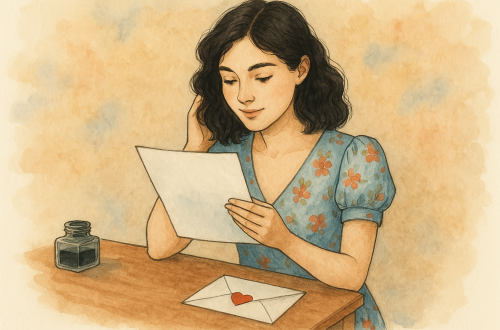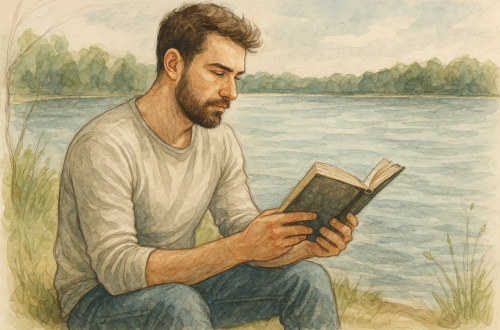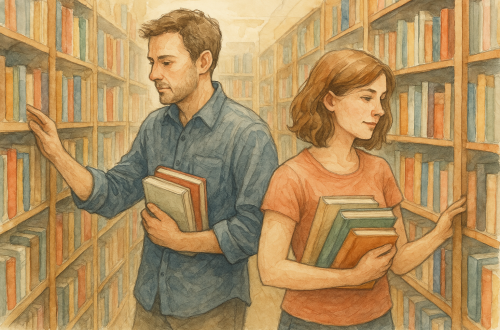The more I read, the more I want to talk about what I read — and I’ve been reading more lately. I don’t mean more than I’ve ever read before. There was graduate school at Cornell — in Russian literature, a landscape of giant novels (which I still love), countless poems and short stories, and sprawling artistic manifestoes. Long before that were nineteen days at my grandparents’ farm in April 1975.
Do you mind very much if I remember for a few moments before I list the books?
(By the way, I’m not the guy in the feature photo above. See me below, if you must.)
Migration
I was in fourth grade when my family moved from Boulder, Colorado, where I was born, to Moreland, Idaho, an unincorporated village near Blackfoot, with — then and now — one post office, no traffic lights, and no city bus.
We rolled into our new driveway at about 11 p.m., having left our old driveway about 5 a.m. The weather was sketchy in Wyoming, and the big U-Haul’s emergency brake didn’t work. Sometime before sunrise we stopped in southeastern Wyoming — probably Laramie — at what we called a gas station back then. Dad got out to gas up the truck. Mom got out to use the restroom. I stayed in the cab, somewhat fearfully, because my job was to keep my foot on the actual brake. If I failed, the truck containing half our worldly possessions might roll down the slight grade and into the street. Or worse.
I’d been warned, but not sufficiently, that there would be lots of work to do, even for a ten year old, to improve our new acre and a half, and then to keep it up. For example, you can grow a lot of weeds in a quarter-acre of vegetable garden. Soon we added a cow for our pasture, a gasoline-powered push mower for our vast lawn, and enough chickens to persuade me that the only good chicken is a dead chicken. A dead, already slaughtered chicken; the slaughtering is no fun at all.
Later came many hours of work on big, actual farms. Many of those days would start before sunrise; an alfalfa field can be idyllic in the early hours. I could usually take a break in the afternoon, while our place and those farms baked in the sun. A break meant a reading break, usually at least two hours and sometimes twice that. Then there would be more work.
But none of that had happened yet. It was April 1975.
Reading On the Old Farm
We unloaded the truck the next day, and they drove me an hour up the road towards nowhere, to my mother’s childhood home in the cozy Lost River Valley, where we’d visited for a week every summer from Colorado. I would stay there with my grandma, who was sweet, and my grandpa, who was not (or so I thought until long after his passing). Meanwhile, Mom and Dad would return to Boulder with the truck, load it up again, and bring my big sister and little brother on the next trip, probably allowing two days this time, they thought. I’d see them when they came to get me, whenever that might be. Probably at least a week. Probably not as long as two.
I shouldn’t expect to hear from them in the meantime. This was a time before cell phones and cheap long distance calls.
It was nineteen days. I only worried about them near the end.
There was little point in starting at a new school there, only to start at yet another new school in a couple of weeks. So I had all the time in the world — unlike my cousins, who lived a stone’s throw away on the farm. They were in school all day. After school I tried to learn to help them with farm chores, but a ten-year-old city boy wasn’t very useful. After chores, for them, came dinner and schoolwork, not playtime.
Like Grandpa — but not with him; my impression was that neither of us wanted that — I took walks in the morning and afternoon. I ate a lot of Grandma’s amazing homemade bread. (She said the secret was lard.) And I learned to like the custard pies she kept making, after I praised the first one and asked for a second helping I didn’t want, to be polite.
In between, I reread all the Hardy Boys books I had managed to pack, maybe three or four. Then I started on my cousins’ large collection of Nancy Drew Books. (In that batch, all the cousins near my age were girls.) I read three books a day — between 550 and 600 pages — every weekday, because it was rainy and muddy outside, and that’s what there was to do.
If my family hadn’t finally appeared to get me on the day they did, I’d have run out of Nancy Drew books the next day and probably started over, because all of Grandma’s many books looked boring, as an adult’s books often do, when you’re a child.
That’s the story of the time when I read all day, every day, and not one of those books was for school.
The UCRC … and On We Go
Fast forward to 2021, a.k.a. 2020: The Sequel. I haven’t been reading more than a couple of hours in a day, with rare and welcome exceptions. But I have my Unconscionably Comfortable Reading Chair (UCRC) and my Ikea reading lamp, and I’ve been using them almost daily, mostly in the evening.
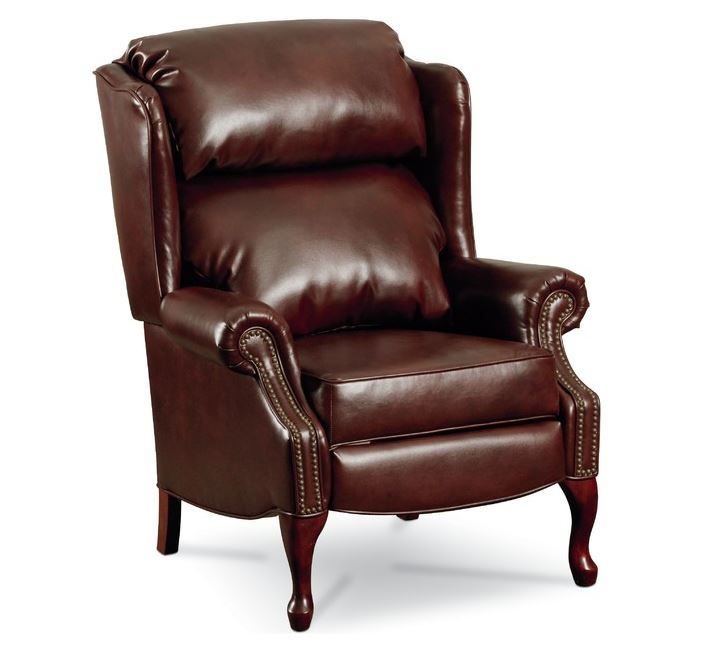
The books I’ve read — finished — lately are short, long, new, old, audio, printed, fiction, nonfiction, translated from French, natively in English …
Here are the latest ten.
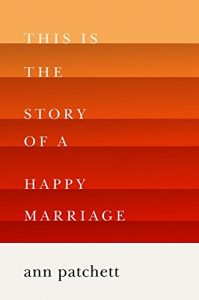
Ann Patchett, This Is the Story of a Happy Marriage (2013)
Ann Patchett is a novelist who paid the bills by writing nonfiction until her novels took off. I’ve never read one of her novels. All I’ve read is this book of essays, which has made her one of my favorite essayists. Her mastery of craft is all you might hope for, and besides that — before, beyond, and through that — her essays are full of heart.
The title essay is one of twenty-two. They’re not all about marriage and romantic relationships, though there’s another called “The Sacrament of Divorce.” Writing is an ongoing theme. Some of the essays are about dogs; I favor dogs as a principle more than an immediate presence, but I loved the essays. She writes of friendship, old people, and the death of the old and not-so-old. All of it is personal, as a personal essay should be.
A sampling:
- “The Getaway Car” is insightful and therapeutic, if you write. It’s about writing and being a writer, and it’s full of wisdom and delight.
- “The Best Seat in the House” is about opera and learning about opera, so she could write about it. “As wonderful as [Renee] Fleming is as a guest host, the sight of her anywhere on the Met stage makes one feel she should go zip up her costume and sing.” And: “Like any other monkey on your back, no addiction ever feels complete until you can pass it on to your friends. I have tried mightily.”
- “My Road to Hell Was Paved” is laugh-out-loud funny. It’s about taking her first RV trip, again so she could write about it. It doesn’t turn out as she expects. (Minor spoiler alert! …) She writes, “I feel like I went out to report on the evils of crack and have come back with a butane torch and a pipe. I went undercover to expose a cult and have returned in saffron robes with my head shaved. I have fallen in love with my recreational vehicle.”
- “The Wall” is about taking the written and physical tests and doing the interviews, all successfully, to get into the police academy in Los Angeles — so she could write about it. It’s also about her dad, a retired police captain. “I am proud of my father. For a brief time I saw how difficult it would be to be a police officer in the city of Los Angeles, how easy it would be to fail at the job, as so many have failed. My father succeeded. He served his city well. I wanted to make note of that.”
- “Do Not Disturb” is about leaving home in Tennessee to spend several days alone at the posh Hotel Bel-Air in Los Angeles, so she could get some work done. “If you accidentally slip up and order the chicken pot pie do not, under any circumstances, eat it.” Writers tend to be introverts, who can write things like, “Sometimes it is the wonderful life, the life of abundant friends and extended family and true love, that makes you want to run screaming for the hills.”
- “The Bookstore Strikes Back” is about banding together with some friends to start an independent bookstore in Nashville, when bookstore closings left the city needing one. That was almost a decade ago, and it’s still going. I’ve never been to Tennessee, but when I go, I think I want my first stop to be Parnassus Books. I’m not expecting Powell’s, but I do love a bookstore that loves being a bookstore.
- “The Mercies,” the book’s final offering, is about befriending — as an adult — a nun who tried heroically to teach her to read and write in a Catholic elementary school. So this essay is about writing to a degree, but also faith, which pokes its head in from time to time through the book, and friendship, another recurring theme in these essays. It’s about sublime things, and it is itself sublime.
I do go on. Maybe you won’t love this book like I do.
Maybe you will. It has art. It has heart. It has smart.
Beat that.
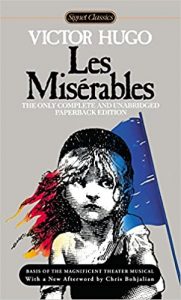
Victor Hugo, Les Miserables (1862)
When I finally read this classic novel, I read it unabridged, in English translation, all 1,463 pages of it. I believe it’s the longest novel I’ve ever read. (It’s slightly longer than War and Peace.) It’s as profound as it is expansive. It’s full of wit and faith and beauty, not just misery, though there’s plenty of that, mostly the horrors humans inflict on fellow humans. In several ways reading it was an experience I did not get by watching it on the stage.
Jean Valjean may not be my favorite character here, but he’s right up there. I think my favorite is the Bishop.
Here’s one passage from near the end, as Jean Valjean carries Marius through the Paris sewer: “The pupil dilates in the night, and at last finds day in it, even as the soul dilates in misfortune, and at last finds God in it.”
I love novels, notably including nineteenth century novels. I’ve read a lot of them, studied dozens, and written and lectured on several. This one, on a single reading, is in my top five.
To receive an e-mail when there’s a new post to Bendable light, enter your e-mail address here and click “Subscribe”:
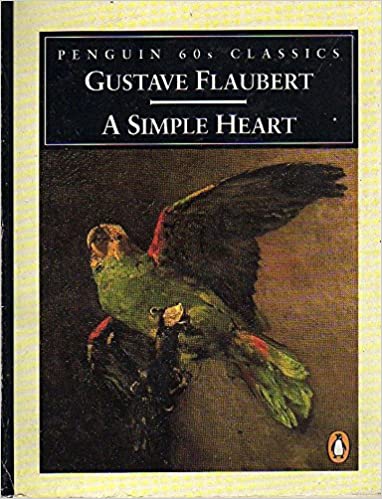
Gustave Flaubert, A Simple Heart (1877)
The day after I finished Les Miserables, I picked up a celebrated nineteenth century French novella by Gustave Flaubert. Same century, different famous French author, vastly different size. I read it in a single sitting.
It’s the life story of a simple, faithful servant — faithful to her mistress and faithful to God, as she comes to understand God in her simple way. I may need to read it again, if only to convince myself either that Flaubert is gently mocking her and her faith, or that he admires it. At this point, I’m not sure. The question involves a stuffed parrot.
If Flaubert meant to be ambiguous about that — a valid approach — then it worked for me. If he didn’t … I think I’d prefer the admiration, so I’ll hope that’s what he meant.
In any case, it’s a beautiful little tale. It’s probably stunning in the original French, but I wouldn’t know.
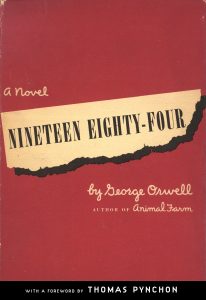
George Orwell, 1984
I first read George Orwell’s classic in December 1983. It seemed like a good time to do that. Lately I’ve read it again.
I try to avoid politics here — I have other venues for that — but I will say this. It is striking how hostile tyrants are to truth, and how important it is (to tyrants) that one capitulate not only outwardly, by obeying despite possible heterodox thoughts, but also inwardly, by believing so ardently that you can see a man hold up four fingers and believe that you see five.
Any relevance of this book to actual, contemporary events, and any resemblance of its characters to any real persons, living or dead, is purely …
Oh, never mind. Read the book. Reread the book. Please don’t use it as an instruction manual.
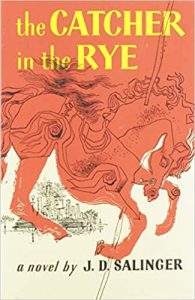
J. D. Salinger, The Catcher in the Rye (1945)
A lot of folks read this book in high school. I don’t think they’d have been allowed to assign it in my high school, and I don’t recall hearing that they ever tried.
For a while as I read, I made a study of Holden Caulfield’s first-person narrative voice, which merits the study (for a writer) but also grew tiresome in the middle. I plowed ahead, and the tale got more engaging toward the end.
There’s a lot of adult misbehavior by teenagers here, principally the narrator, and a lot of precocious cynicism, but he’s not soulless or without redeeming virtues. The book is worth reading once. It’s widely regarded as one of the greatest American novels, so some readers have found it worth reading twice or more. I’m not sure I’ll ever be one of them.
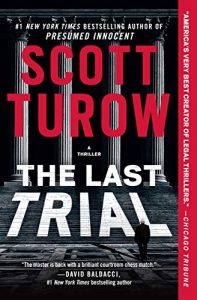
Scott Turow, The Last Trial (2020)
Scott Turow is my favorite author of legal thrillers and has been for a long time. On one hand, if he pumped out books like John Grisham does (I also read him, usually), I’d be delighted. On the other hand, it probably takes two or three times as long to write a Scott Turow novel, because Turow sets the plow deeper, which I like a lot.
There’s plenty of in-the-weeds legal wrangling here, plus a thoughtful study of aging and even of family.
My expectations of a Turow novel are high; he did not disappoint.
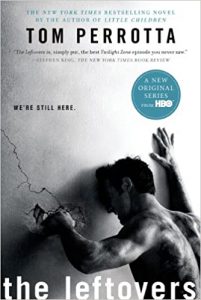
Tom Perrotta, The Leftovers (2011)
The Leftovers is my first Tom Perrotta novel (not his). It’s a tad dystopian. A percentage of people worldwide simply disappear, instantly and simultaneously. This is the story of those who remain — the leftovers.
It might have been the Rapture, in which the righteous were suddenly taken up. This poses a problem for clergy who remain: Why are they still here? How are they less pleasing to God than the some of the well-known sinners who disappeared? But we’re not sure it was the rapture.
There’s no reason to believe it was aliens, and no indication that some earthly nation caused it with mysterious weaponry or futuristic science run amok.
Naturally, those who remain are traumatized and act out in various ways, some fairly ordinary, some quite strange. Family relationships among the remnant are strained and shattered. Religion takes fanatical and cultlike turns, not least in the form of a guy named Holy Wayne and his Healing Hug movement.
An open question is, what’s next? Another mass disappearance? The end of time? How soon? What form will it take? And what’s the point of living for the future anymore?
It’s a good, interesting, enjoyable read, and a tad mind-bending, if you want it to be.
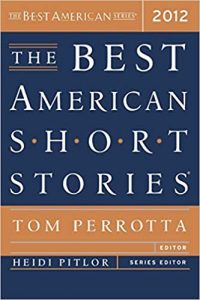
The Best American Short Stories 2012
Coincidentally, Tom Perrotta edited this anthology of short stories. I bought it on remainder several years ago at the BYU Bookstore (of blessed memory). I’ve been writing some short stories; you might understand why I would both enjoy and study a collection of excellent ones.
A few stories seemed intentionally vague and deliberately elusive, which is normal in a short story anthology, but it was fewer than I expected. I enjoyed the collection, and some were simply superb. (Maybe they are all superb, just not all to my taste.)
Here are four favorites:
- Steven Millhauser’s “Miracle Polish” was delightful and mind-bending. With the help of a mysterious, magical polish which has an unexpected effect on mirrors, we explore reality, perception, humanity, beauty, and other provocative things.
- Alice Munro’s “Axis” is about young women — mostly one young woman — who want to escape the farm and the small-town world they know, to wherever a different, better, more exciting life is happening. Whether they do escape or even can, I leave for you to discover. (Alice Munro is one of our most celebrated writers of short stories.)
- In Julie Otsuka’s Diem Perdidi an aging woman is losing her memory. Some old things she remembers; many new things she forgets. It’s poetic and poignant.
- Jess Walter’s Anything Helps might strike readers of a particular sort as a celebration of profanity. But it’s about a homeless dad and a son he doesn’t live with, and a birthday and a rainstorm and a book.
There are twenty stories in all. The series has a different editor every year, and the editor’s introduction can be a gem. (One of the essays in Ann Patchett’s book — see above — is her introduction to the 2006 collection.)
Tom Perrotta’s introduction begins and ends with pizza boxes. Don’t miss it in your rush to get to the stories.
There’s an appendix for readers who take the short story seriously: several pages listing other “distinguished” stories from the year and where they may be found. Another appendix lists US and Canadian magazines which publish short stories. (As a writer I wouldn’t use a nine-year-old list, but I’d use the most recent or the one before that.)
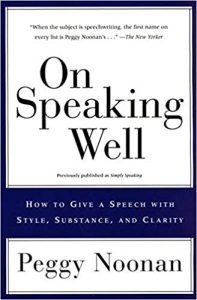
Peggy Noonan, On Speaking Well (1998)
I worked my way through college as a speech writer, among other things. Peggy Noonan is in the pantheon of speech writers, largely on the strength of her work on major speeches by Presidents Ronald Reagan and George H. W. Bush. I’ve enjoyed her books, her syndicated columns, and — a few years ago — hearing her in person at BYU. So I thought I might enjoy this thin tome, and I’m pleased to report I was right.
She writes about how to prepare and deliver a speech, and how to write speeches for others. Her advice is full of her characteristic wit, charm, and war stories.
I read all but the last 14 pages a few years ago, then put it in my stack of books to finish. Go figure.
Most of those 14 pages are a chapter called, “Mother Teresa Knocks ‘Em Out.” By itself, it’s worth the price of admission. “She came with a sword,” writes Noonan.
For me, at least, this will be fun to reread sometime. It’s good for reading aloud too, if you’re into that sort of thing.
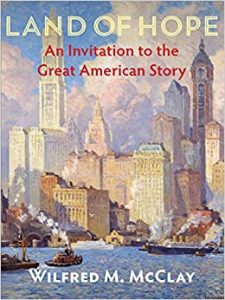
Wilfred M. McClay, Land of Hope: An Invitation to the Great American Story (2019)
This is a US history textbook, written to celebrate American history while also playing straight with difficult topics such as slavery. It’s an alternative, and to some degree a response, to the civilizationally toxic but endlessly popular textbook by Howard Zinn, A People’s History of the United States.
I’m reasonably well versed in most periods of US history, but I learned some interesting things. McClay handles those difficult topics I mentioned with a fairness and a depth of insight which sometimes elude us. And he manages to make his 425-page survey of a nation’s history at once refreshingly detailed and surprisingly coherent.
I bought Land of Hope on audio. Now I’m giving print copies as gifts. If you wonder which is the most important book in my list today — if people will read it — I think it’s this one. I hope to write about it in more detail elsewhere sometime soon, more politically than would fit here.
I’d like to believe that this view of American history will regain its essential place in our culture and schools. Forgive me if that’s too political. Then go read the book.
What I’m Reading Next, Maybe
I’m never quite sure what I’ll read, let alone finish, next. Even in my personal library, the choices are legion. But the small table to the right of the UCRC, which has my globe, my Oxford American Dictionary, and a leatherbound book of scripture on it, also holds the most likely contenders.
Here’s what you would see there, if you were basking in the UCRC and happened to glance to your right.
- I’ve already begun my next thick novel. My favorite twentieth century Russian novel, Vasily Grossman’s Life and Fate, is the sequel to this one. In the translation I have, it’s called Stalingrad, but a literal translation of its title, За правое дело, would be For a Just Cause. You guessed it; it’s mostly about World War II. I’ve read only fragments before.
- There’s another collection of short stories awaiting my attention.
- There’s also George Saunder’s recent A Swim in a Pond in the Rain, which presents itself as “a master class on writing, reading, and life.” It involves several Russian short stories I first read long ago, with essays exploring each.
- The same day I bought Ann Patchett’s essay collection (many, many days ago), I bought Marilynne Robinson’s When I Was a Child I Read Books. I read the first essay, loved it … and will soon start again at the beginning. She’s more philosophical (in an intellectual sense) than Patchett, so far, and I have read one of her novels, Housekeeping. I’m looking forward to this.
- Steven Strogatz’s The Joy of X is a celebration of mathematics in thirty bite-size chapters. I’m reading it in random moments, when I want something quick and fun. Chapter 7 is next.
- I’ve never read a Milan Kundera novel, but that needs to change. His first, The Joke, is in the short stack.
I predicted the nextness of two other books last time we did this. My other quick-and-fun priority is a small volume by Thomas Cathcart and Daniel Klien, Plato and a Platypus Walk into a Bar … Understanding Philosophy Through Jokes. And when I’m in a mood to read seriously about the craft of writing, I’ve been picking up Donald Maass’ The Emotional Craft of Fiction. I keep going back to reread what I just read, so that one may be a while.
See you at the bookstore?
Feature photo credit: Jilbert Ebrahimi on Unsplash.
From the Author

Comments are always welcome, within the bounds of common civility and relevance. There’s a place for them below.
Subscribe below to receive alerts of new posts by e-email.
If you liked what you read here, please consider sharing it with someone else who might enjoy it. If you’re on Facebook, you might consider liking or following my Bendable Light page there.
And if you’re interested in my published fiction, which mostly isn’t about politics, check out my two published collections at 60 East Press.


